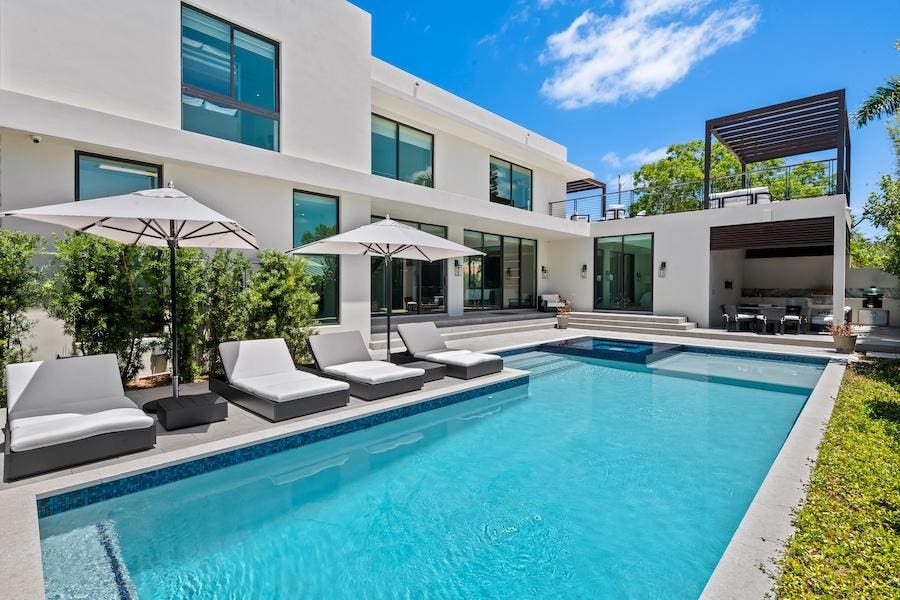If you’ve been looking for a second home, vacation home, or pied a terre—you might have encountered an emerging trend called “fractional home ownership.” At an initial glance, it feels a bit like Timeshares 2.0—but it’s a different concept entirely.
“Fractional home ownership is a real estate model where multiple individuals or entities collectively own and share ownership rights to a single property,” says Whitney Curry, Chief Marketing Officer of Pacaso, which is a marketplace offering co-ownerships in forty locations with everything from beach front property in Malibu to ski houses in Vail. “Instead of one family owning 100 percent of a vacation home that they will use just a few weeks each year, co-ownership enables people to right-size their ownership to align with what they’ll actually use.”
But is this model a smart investment or something regrettable in the long term? Here’s what you need to know about this real estate trend.
Not A Timeshare
While fractional home ownership or co-ownership sounds similar to a timeshare because both models provide access to real estate for a specified amount of time annually—that’s essentially where the similarities stop. With fractional home ownership, the home is a real estate asset, whereas timeshares are not an asset. “[A timeshare is] a liability that gives the buyer the right to use time in a group of properties. Oftentimes, usage is fixed to a preselected set of dates. Timeshares are notoriously hard to sell, and often sell for a loss,” explains Curry.
Unlike timeshares, fractional home ownership gives you access to a single property as opposed to a portfolio of properties. They’re also easier (but not necessarily easy) to sell than timeshares because they can be listed for resale on the MLS or Zillow at a price chosen by the seller.
David Harris of Coldwell Banker Warburg tells me, “Unlike a timeshare, fractional homeownership properties follow the real estate market values and have the benefit of increasing property value as the overall market increases. So, if the fractional property you own increases in value during your ownership, you can sell for profit.”
The Benefits Of Fractional Home Ownership
While it’s not without risk, John Walkup, co-founder of real estate data analytics company UrbanDigs tells me there are numerous benefits of this ownership model. “Fractional ownership in real estate offers a mix of affordability and flexibility for individuals looking for a vacation home or pied-à-terre. On the upside, it is usually much cheaper than owning and maintaining a home outright, making it a more cost-effective choice for those unwilling to shoulder the entire financial burden of homeownership for a home they will not use on an extended basis.”
Some fractional homeownership agreements allow owners to list their time on short-term marketplaces like VRBO or AirBnb. So, these properties can also produce income. It’s worth noting that Pacaso does not allow this.
Another benefit is that the costs of renovation, furniture, and other essentials are split among the owners. This is a major part of Pacaso’s business model. All Pacaso homes are renovated, and feature premium furniture and even bespoke art from renowned artists including Elizabeth Sutton. “All Pacaso homes are sold fully furnished with professional, high-end, interior design. From the silverware in the kitchen and fully stocked pantry with abundant appliances to luxury linens and Instagram-worthy floaties in the pool, no detail is overlooked,” says Curry. “The homes are perfect from day one, for the first owners stay so owners can just show up and enjoy their time memory making with family and friends.”
The company also manages the properties once all the shares are sold. So everything from booking time to cleaning, and additional maintenance issues such as the driveway plowed are taken care of. This can be very attractive to those who want a second home but want to be entirely hands-off when it comes to maintenance.
Still, there are more risks involved with this investment model than sole ownership of a vacation home.
The Downsides Of Fractional Home Ownership
Broker Gerard Splendore of Coldwell Banker Warburg and his wife are co-owners of a property in Florida along with his sister-in-law and her husband. Both couples are on the deed as well as the mortgage and split maintenance costs equally. “We run this like a business, obtaining quotes for work and comparison shopping for appliances. To date, we have had to replace the dishwasher twice, the stove, the refrigerator, and the hot water heater. First, the air conditioning ductwork was replaced, then the central A/C. The lanai ceiling needed to be replaced, as did the garage door opener,” he says.
While this particular arrangement works most of the time, conflict has arisen over visiting dates as well as whether or not to renovate the bathrooms.
Another issue with fractional home ownership is that selling can be a challenge. “Selling a fractional interest can prove far more challenging than selling a wholly-owned property, mainly due to the smaller subset of buyers. It’s a niche market that only appeals to some people,” says Walkup.
He also notes that financing can be tricky. “Banks can also be hesitant to lend against these properties, so cash buyers are preferred, narrowing down the buyer pool.”
That being said, Pacaso is unique because it partners with banks allowing qualified buyers to finance up to 70 percent of the cost. Shares can also be purchased with crypto.
Another problem is that much like short-term rentals, some cities are considering banning these arrangements, including Newport Beach, California.
However, for someone looking for a vacation home that might be out of their reach otherwise and they’re willing to take a risk—fractional home ownership might be worth looking into.
Read the full article here





